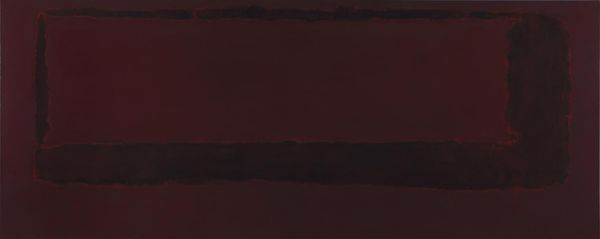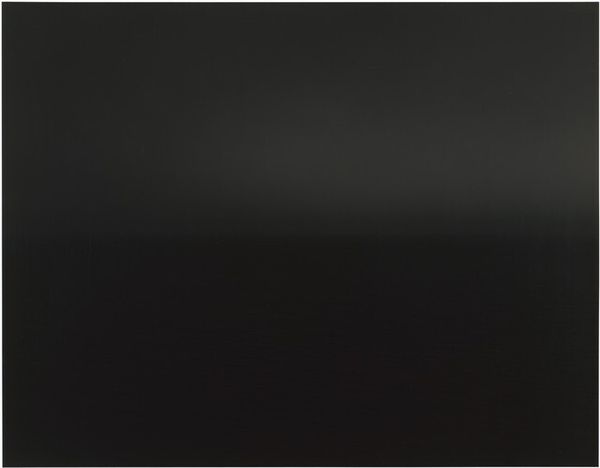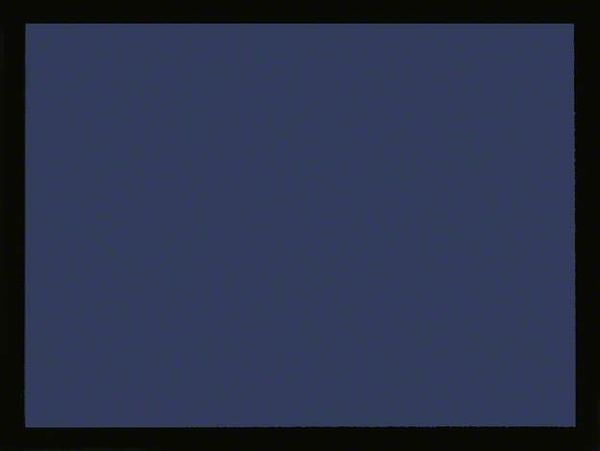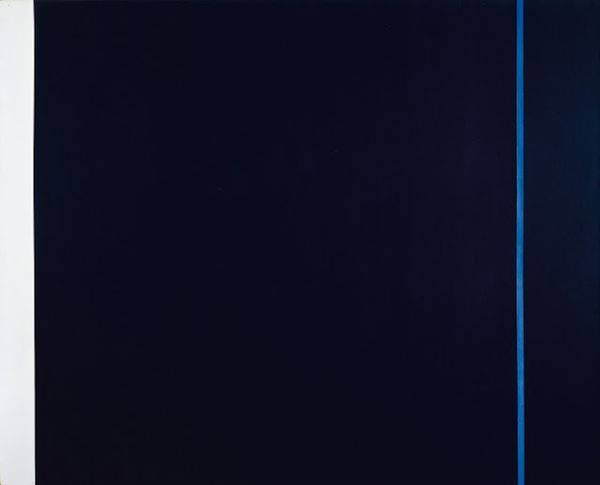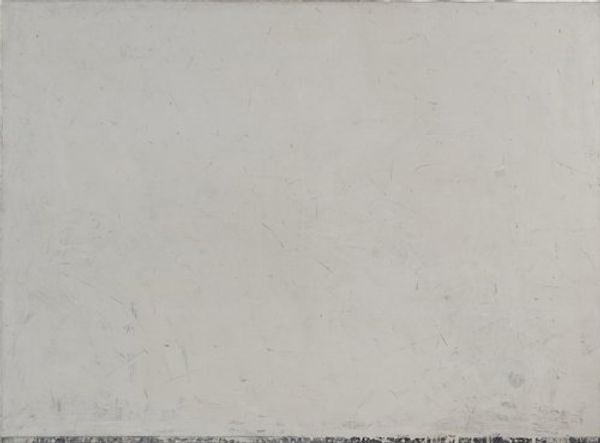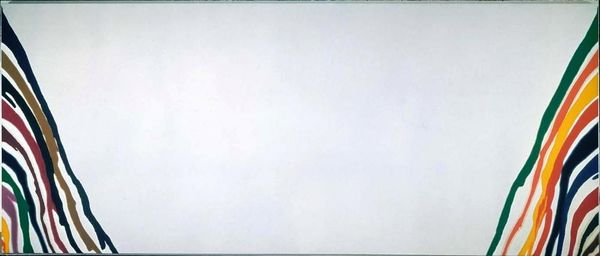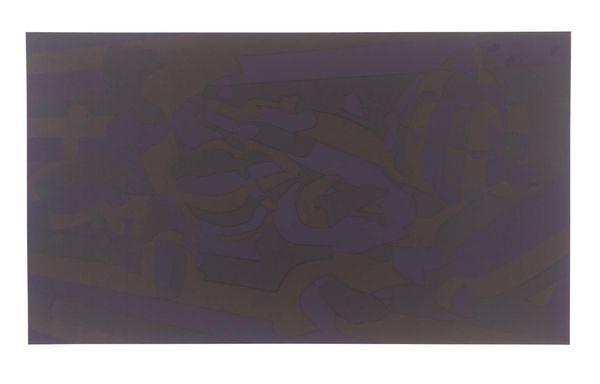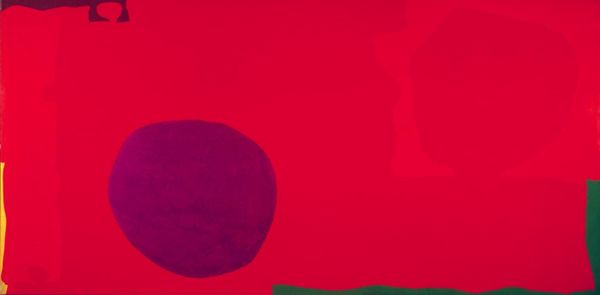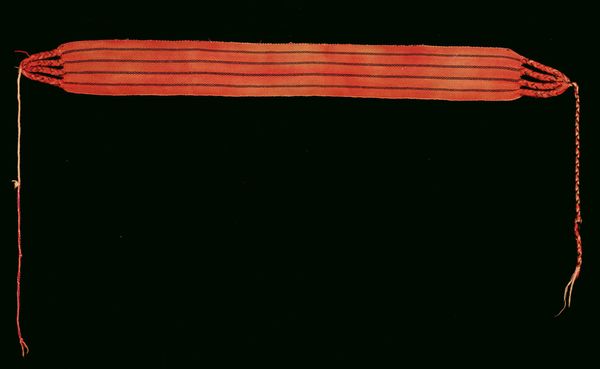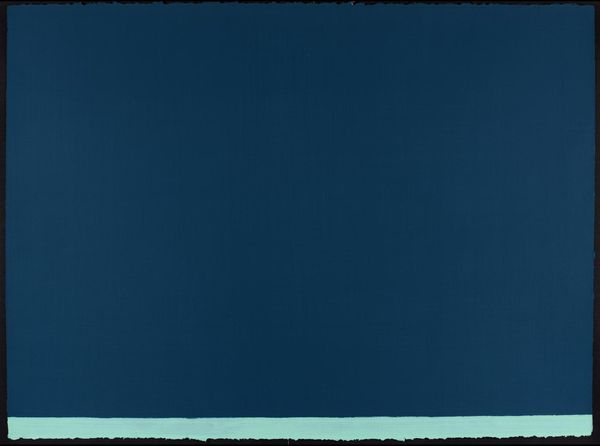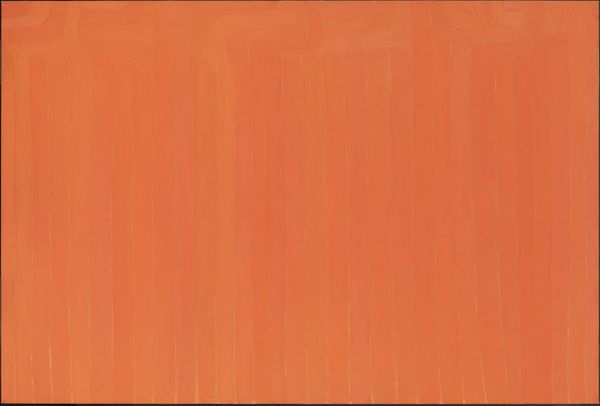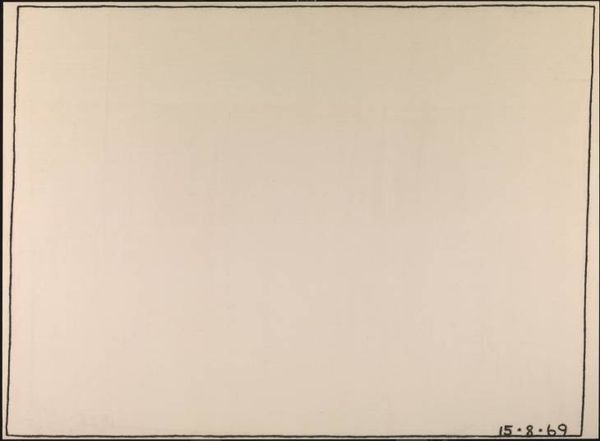
Dimensions: image: 800 x 590 mm
Copyright: © William Turnbull. All Rights Reserved, DACS 2014 | CC-BY-NC-ND 4.0 DEED, Photo: Tate
Curator: William Turnbull's "9," a work held in the Tate Collections, presents a compelling study in minimalist form. What stands out to you initially? Editor: The suffocating hue of deep red. It feels almost violent, like congealed blood. There's a starkness that is immediately unsettling. Curator: The composition is carefully calibrated. The central plane of color is framed by two vertical bands, creating a sense of enclosure. Note how the subtle tonal variations within the red prevent it from becoming monotonous. Editor: But what does it signify? Is Turnbull exploring the psychological weight of confinement? Or is it about the dominance of certain narratives, how they can overwhelm and silence other voices? This color saturation feels aggressive. Curator: Perhaps it's about reducing painting to its essential elements: color, form, and surface. The absence of representational imagery allows for a pure, unmediated aesthetic experience. Editor: Or, the absence screams of the historical and social contexts pushed to the margins in favor of a supposedly 'pure' aesthetic. It is a frustratingly closed surface. Curator: An interesting paradox, then. Editor: Indeed. This work challenges us. It demands we confront uncomfortable questions about art’s role in shaping, or obscuring, reality.
